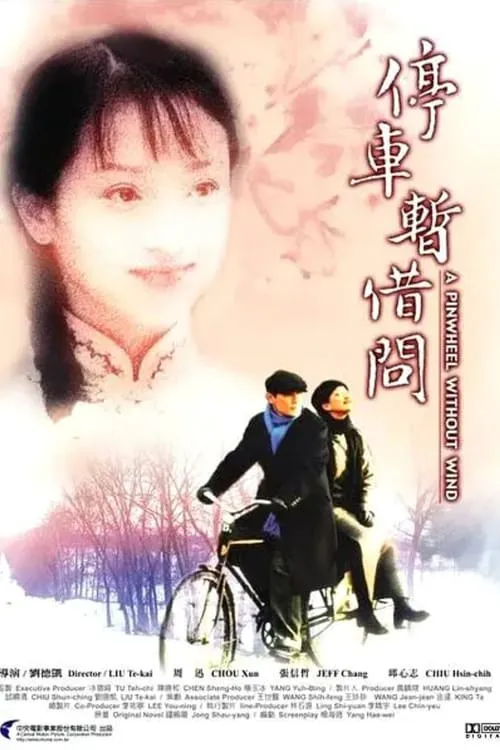A Pinwheel Without Wind

Plot
A Pinwheel Without Wind is a poignant and beautifully shot film that takes place in China in 1945. The story revolves around the lives of the young and vibrant Ningjing Zhao (played by Xun Zhou) and her distant cousin, Lin Shuang-Ran. As their romance blossoms, they find themselves entangled in a complex web of societal expectations, family obligations, and personal desires. The film opens with Ningjing, a free-spirited young woman living in a traditional Chinese family. Despite being bound by the conventions of her time, Ningjing's spirit remains unbroken and unapologetic. Her life takes a significant turn when her family arranges for her to meet her distant cousin, Lin Shuang-Ran. Initially, Ningjing is unaware of her cousin's betrothal to another woman, but as they spend more time together, she discovers the truth. Shuang-Ran, on the other hand, is a man torn between his duty to his family and his forbidden love for Ningjing. As the daughter of a wealthy family, Shuang-Ran's engagement to her fiancée, Xiaoyu, has been arranged by their families for years. However, his encounter with Ningjing sets off a chain of events that makes him question his obligations and the path that lies ahead. As the romance between Ningjing and Shuang-Ran deepens, they find themselves struggling to reconcile their feelings with the societal expectations placed upon them. Their love becomes a constant reminder of the choices they must make between happiness and duty. The chemistry between the lead actors is palpable, and their performances bring a depth and nuance to the characters that is both captivating and heartbreaking. One of the standout aspects of A Pinwheel Without Wind is its portrayal of the lives of women in 1940s China. The film sheds light on the limited options available to women during this period, highlighting the restrictions imposed upon them by a patriarchal society. Ningjing's desire for autonomy and self-expression is a testament to her strength and resilience, and her struggles serve as a powerful reminder of the sacrifices women made in pursuit of their dreams. The cinematography in the film is breathtaking, with sweeping vistas of the Chinese countryside capturing the beauty and tranquility of the era. The director's use of light and color is equally impressive, imbuing the film with a dreamlike quality that perfectly complements the narrative. As the story unfolds, Ningjing and Shuang-Ran must navigate the complexities of their love in the face of adversity. Their families, bound by tradition and expectation, view their relationship as a betrayal of the family's honor and a disruption to the social order. The tension between the young lovers and their families is palpable, and the film beautifully conveys the emotional turmoil that results from their conflicting desires. Ultimately, A Pinwheel Without Wind is a poignant exploration of love, duty, and the human condition. The film raises important questions about the choices we make in life and the consequences of our decisions. Through its beautifully shot scenes and nuanced performances, the movie takes the viewer on a poignant journey, one that is both heartbreaking and uplifting. In the end, Ningjing and Shuang-Ran's love is put to the test as they confront the reality of their situation. The film's conclusion is both tragic and redemptive, a testament to the enduring power of love in the face of adversity. A Pinwheel Without Wind is a film that will leave viewers reflecting on the complexities of human emotion and the enduring beauty of true love.
Reviews
Recommendations


